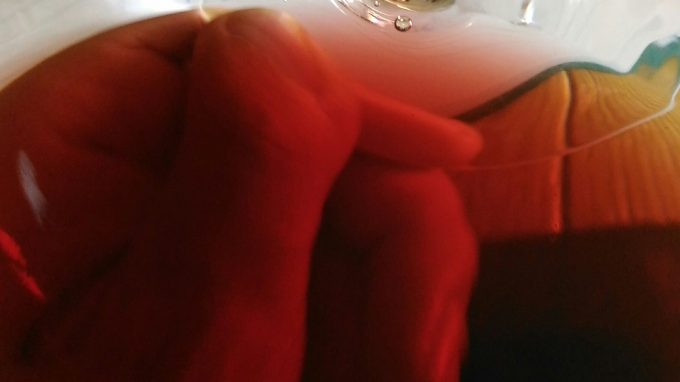'Live from the Langhe & Roero' DBGitalia connects classic Italian fine wine producers with U.K. & Worldwide importers & distributors

Published
23 June 2017
Tags
Barbaresco – in essence
Barbaresco – observations after three (warm!) days in the field, June 2017 visiting: Olek Bondonio, Giuseppe Cortese, Roagna, Produttori del Barbaresco, Fletcher Wines, Paolo Veglio, Marchesi di Gresy, Albino Rocca, Poderi Colla, Paitin, Francesco Versio, Sottimano, Punset, Dante Rivetti, Manuel Marinacci & tasted Rizzi, Bruno Rocca, Cascina delle Rose, Rivella Serafino, Ugo Lequio, Cascina Luisin, Figli Luigi Oddero. Vintages mainly sampled: 2014, 2013, & 2007
Geography & History
Further inland north-east of Barolo, closer to Asti than to the Alps, on the banks of the river Tanaro. Smaller zone (c.800 ha) vs Barolo (c.2000ha), 4 mln vs 14 mln of Barolo/anno. Comprises communes of Barbaresco, Neive, Tresio & part of Alba (San Rocco Seno d’Elivo). The nobles of Castello di Neive labeled their wines ‘Neive’ before Barbaresco’s creation in 1894 (which they subsequently joined, begrudgingly!) Apparently commune of Neviglie once included then opted out to focus on Moscato. Recent developments have witnessed the rise of the new, vignaiolo (winegrower), whose family once sold fruit to either the Cantina Sociale or to Giacosa, but now they’re making the wines themselves!
Topography
Lower, tightly packed (vs Barolo) cluster of hills (except Treiso) lower down & closer to the Tanaro river valley, hence warmer mesoclimate. Unlike in Barolo, Barbaresco hills generally run North/South, so aspects are W/E, with only a few notable S facing vineyards (Roncagliette, Roccalini, Rabaja, Gallina, Martinenga, Faset, part Asili, Bricco di Neive…), so giving extra freshness/acidity/aromas/vim to the wines. River Tanaro runs along commune of Barbaresco, eating away at the white calcareous clay/Marne Sant’Agata/Tortonian cliffs above. (vs Barolo, where the Tanaro now runs round the region, marginally influencing only the village of Verduno & La Morra vyd of Berri).
Climate
Warmer & drier than Barolo: protected from westerly storms by Barolo & river Tanaro. Breezy conditions due to Tanaro river (bringing air currents along valley); climate more influenced by warmer currents from the northeast (vs Barolo’s westerly Alpine influence). Barbaresco open to Tanaro river influence; Neive further away from river,so warmer; Treiso higher & breezier. Tanaro protects & ventilates (the village of Barbaresco in particular) but its humidity can bring rot. Harvests consequently tend to be a week before those in Barolo.
Soils
Three subzones recognised:
1. Creamy white Tortonian, Marne Sant’Agata (circa 7 million yo), calcareous clay/tufo mainly in commune of Barbaresco, but also part of Neive (see below), gives broad (tannic) structure, richness, depth & minerality. 2. Sandy soils of Neive vyds, notably west & north/north-east of the commune gives warm soft tannins, lower acid & supple juicy fruit. 3. (Older) limestone white & marine sand (Formation of Lequio closer to Alta Langa, as per Barolo’s Serralunga & Monforte d’Alba) found in village of Treiso, but also in Bricco di Neive & San Rocco Seno d’Elvio at the foot of Treiso commune, provides ethereal, racy, rose petal charm & perfume.
Wine styles
> Perfumed, pale garnet/violets, ethereal, slight, racy, watery-pure acidity, pithy/salty fruit tannins – generally associated with Formation of Lequio limestone & marine sand, the product of poor, dry, minerally rich soils similar to Serralunga d’Alba in being high acid (altitude & alkaline soils), pale garnet (high acid), found mostly in Treiso commune but also in San Rocco Seno d’Elvio, & eastern part of Bricco di Neive, notably from vineyards of Nervo, Pajore, Rombone, Montersino (San Rocco Seno d’Elvio), Bernadot, Bricco (di Neive), Bric’ Micca. Closer in style (if more fragile) to top halves of Barolo’s Serralunga & Monforte d’Alba. Medium to long ageing potential.
> Full, redcurrant, rich, august fruit tannins, darker, balsamic, brambly fruit, white stone minerality – associated with the village of Barbaresco, thanks to the younger Tortonian white tufo/calc soils from lower (than Treiso) slopes, enriched over the millennia by river alluvial (?), shaped/depleted by prevailing westerly winds; fine examples Paje, Asili, Pora, Rabaja, Roncaglie, Roncagliette, Ovello, Montefico, Ronchi, Montestefano. Arguably extends to the atypical vineyards of Cotta, San Cristoforo, part of Basarin & across to Serraboella in (Bricco di) Neive? Wine style closer to Barolo villages of Roddi & Verduno, & to a lesser extent La Morra. Longer ageing potential.
> Warm, rich, softer fruit tannins & generous strawberry fruit, lower supple acid – characterised by the white/yellow/red (Asti) sandy soils found in the village of Neive, notably in the west & northern parts (direction Costigliole d’Asti), such as Gallina, Albesani, Starderi, Serracapelli, Rivetti, Bricco di Neive (northern part). Medium ageing potential.
Regulations/disciplinare: minimum alcohol 12% (vs 12.5% for Barolo). ageing 26 mths, of which 9 in wood (vs 38 mths, of which 18 in wood for Barolo).
Vintages:
2014 – the Barbaresco zone enjoyed the best of the weather in 2014, with 50% less rain than in Barolo & no hail storms, harvesting under blue skies during the hot September & early October. Yields were down by up to 50%, with producers selecting hard to achieve good fruit. Thinner skins & less than perfect seed ripeness meant that a shorter maceration was often used. Many recently bottled so difficult to judge, but bright, ripe fruit, crunchy freshness & a delightful fruitiness.
2013 – completely different: a classic vintage, not too hot nor too cool, normal harvest, very good quantity & quality, characterised by a tight weave of red cherry stone fruit, fine noble tannins & racy acidity. Focus. For the longer term.
2007 – along with 1997, 2003 (& ? 2017), one of the hottest vintages of recent years. The best showed a fresh, sweet cassis, along with more menthol, tobacco, blood orange notes. Drinking.